Reviews
Fritz Lang
Germany, 1921
Credits
Review by Matt Barry
Posted on 10 March 2014
Source Amazon Instant Video (Egami Media edition)
Categories Silent Lang
One of the earliest extant Fritz Lang films, Destiny (Der Müde Tod) is structured around the story of a young woman challenging Death for the soul of her husband. This premise allows for Lang to indulge in Expressionist, atmospheric dread and epic fantasy, creating an interesting contrast in its parallel stories of star-crossed young lovers whose destinies end tragically in death.
Lang begins this dark tale with an appropriately eerie carriage ride through a stark landscape. The passengers in the coach include a young couple, played by Lil Dagover and Walter Janssen, apparently newly-married, making their way to a town. The whole sequence calls to mind similarly eerie coach rides in films like Murnau’s Nosferatu or Sjostrom’s The Phantom Carriage. En route, the carriage stops to pick up a dark, mysterious stranger (played by Bernhard Goetze), immediately filling the young couple with a sense of dread. Upon their arrival in town, the couple stops at the Golden Unicorn Inn, where the members of the town council also convene on a nightly basis. The story briefly transitions into a flashback, as the council members tell of the mysterious stranger (the same figure we saw earlier in the carriage) who came to the village seeking to lease a piece of property next to the town cemetery, eventually erecting a wall around the property whose only means of passage was a secret gate, known only to the stranger himself.
Meanwhile, the young couple is seated at a table in the inn, when the stranger from the carriage arrives. He takes his seat at couple’s table, and leads the husband away with him. The woman searches everywhere, desperately trying to locate her husband, and finally collapses outside the wall by the graveyard. When she realizes that the stranger is, in fact, Death, and that her husband’s time has come, she pleads with him to reunite her with her dead husband. Seeing the woman’s obvious despair, Death tells her three stories, each represented by a different burning flame, that depict young couples in different times and places (Persia, Venice and China, respectively) whose love ultimately ends in tragedy. Death finally offers the woman a bargain: if she can find someone willing to give up his or her life in exchange for her husband’s, he will return her husband to her. Death’s final proposition forces the young wife to ask herself what cost she is willing to pay in order to be reunited with her husband.
Although the setting of Destiny is supposed to represent “some time and some place” (according to an introductory title), it seems to be rooted in 18th or 19th century Germany. This is not incidental, as Lang appears to be drawing on Germanic folklore traditions, especially in his representation of the young couple menaced by supernatural forces. Visually, parts of the opening sequence owe something to the Scandinavian films of the period, especially Sjostrom’s, with stark contrasts of dark figures against a white sky. It is here that Lang is able to exercise the greatest deal of control over the atmosphere, setting the film up like a ghost story with an ethereal tone, eerie shadows, and visual contrasts to conjure up the appropriate sense of dread. Everyone and everything moves slow, as if in a dream. The impending sense of doom seems inevitable, but Lang takes his time in building up to the confrontation between the woman and Death.
If the framing “German” sequence is a triumph of atmosphere, then the “Persian”, “Venetian” and “Chinese” segments are triumphs of production design. The German sequences, designed by Walter Rohrig, are more firmly established in the Expressionist tradition. Less concerned with the foreboding atmosphere of the main story, each of the three segments illustrates a fantastic and epic quality. The production design for each sequence is credited to a different artist: Hermann Warm designed the Persian and Venetian segments; and Robert Herlth designed the Chinese segment. This latter segment, in particular, boasts some accomplished special effects. It seems to have at least partly inspired Douglas Fairbanks’ The Thief of Bagdad three years later, both in terms of its set design, and its use of a rudimentary “flying carpet” special effect that is sufficiently impressive, though not as complex as in Fairbanks’ film.
What makes Destiny a particularly compelling story is its portrayal of a Death that has grown tired of carrying out God’s orders. Indeed, its German title translates as “Weary Death”. Unlike the Death of Bergman’s Seventh Seal, Lang depicts a figure that does not necessarily relish his power and even allows the audience to identify with his fatigue at the unenviable task of collecting souls for all eternity. In his performance as Death, Bernhard Goetze manages to convey a psychological complexity behind an appropriately stoical facade.
Destiny was produced by Decla-Bioscop, for whom Lang would make a number of films during the early- and mid-1920s, and he works here with some of his frequent collaborators, including producer Erich Pommer, cinematographer Fritz Arno Wagner, and his wife and scenarist Thea von Harbou. As a key work in the German Expressionist tradition, Destiny remains an effective early film for its director, and one that would point the way to later successes.
More Silent Lang
-
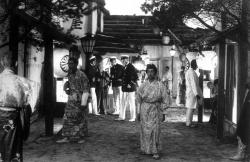
Harakiri
1919 -
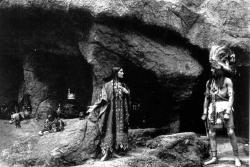
The Spiders
1919 -
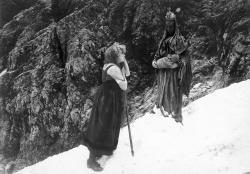
The Wandering Shadow
1920 -
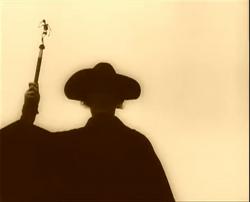
Destiny
1921 -
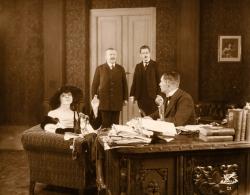
Four Around the Woman
1921 -
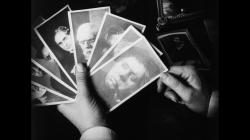
Dr. Mabuse the Gambler
1922 -
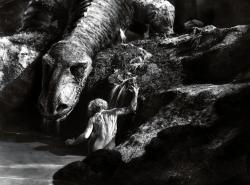
Die Nibelungen
1924 -

Metropolis
1927 -
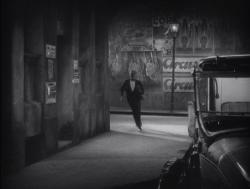
Spies
1928 -
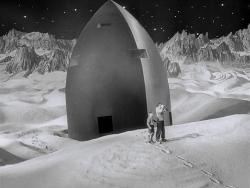
Woman in the Moon
1929
We don’t do comments anymore, but you may contact us here or find us on Twitter or Facebook.



